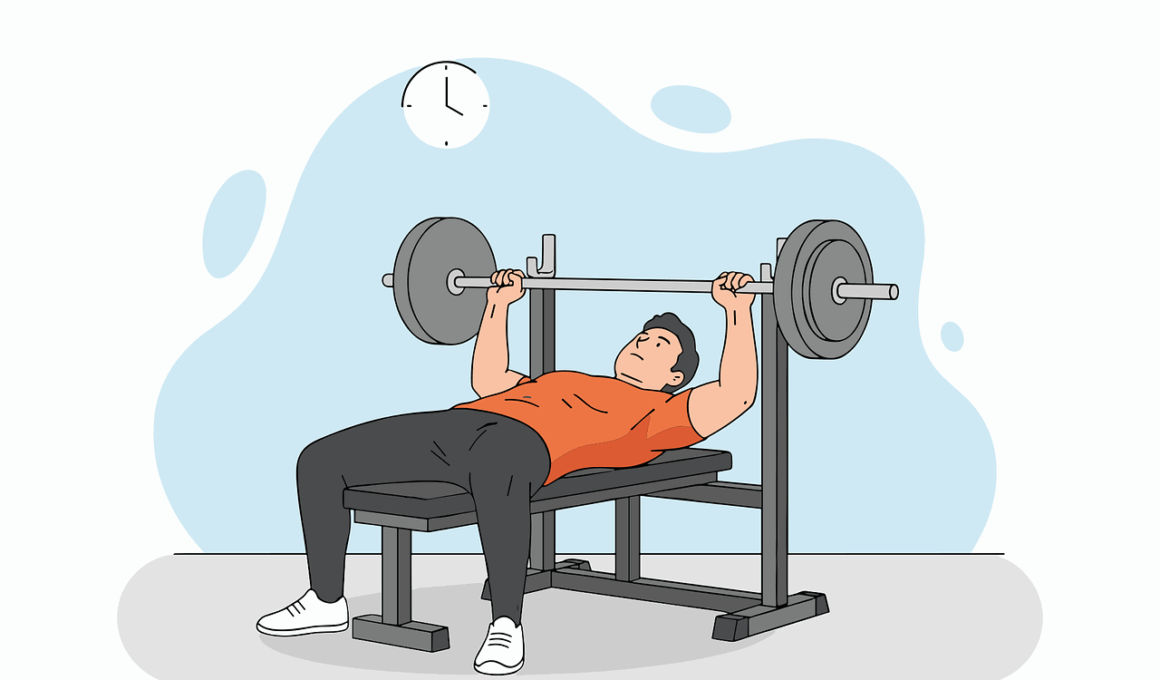The Evolution of HIIT Workout Apps: From Simple Timers to AI Coaches
The world of fitness has witnessed remarkable transformations over the past decade, particularly with High-Intensity Interval Training (HIIT). Initially, HIIT workout apps began as basic timers, allowing users to set up intervals for their workouts. These simple applications provided an extremely useful tool, enabling fitness enthusiasts to time their training efficiently. With the rise of smartphones, the accessibility of these apps surged, making it easier for individuals to perform HIIT workouts wherever they were. As smartphones became primary fitness tools, user experiences improved significantly. Developers started to integrate features like customizable workout plans, exercise demonstrations and user-friendly interfaces, elevating the functionality of these apps. This evolution marked the beginning of a growing trend, as more fitness enthusiasts turned to technology to optimize their workouts. The new generation of fitness apps not only monitors workouts more thoroughly but also tracks nutritional habits. This shift from basic interval timers to complex fitness solutions fostered an environment rich in features, guided workouts, social sharing, and overall engagement. In essence, HIIT app development mirrored the technological advancements occurring in parallel, effectively reshaping how individuals approach fitness.
As the demand for sophisticated solutions in wellness increased, developers began integrating features rooted in community and gamification. Social sharing functionalities, which allow users to connect with friends and compete, became pivotal in user retention. The ability to share achievements and challenges not only motivated users but also fostered a sense of belonging among participants. Additionally, leaderboard functions added a competitive edge, encouraging users to improve continually. HIIT workout apps started incorporating challenges and virtual competitions, which led to increased user engagement. Furthermore, these apps began harnessing data analytics to provide personalized feedback and assessments. By using data collected during workouts, they recommended specific training regimens tailored to individual performance. These features significantly enhanced user experience, making workouts more interactive and personalized. Moreover, integration with wearable devices facilitated real-time monitoring. Syncing HIIT apps with Smartwatches provided users with immediate feedback regarding their heart rates and calories burned, appealing to the health-conscious community. The emergence of community-based features revolutionized HIIT workouts from solitary efforts into collective journeys. This engagement strategy resonates well, particularly in today’s digital landscape, where connectedness is valued.
Artificial Intelligence in HIIT Applications
The latest wave of innovation in HIIT workout apps has introduced the integration of artificial intelligence (AI). This advancement signifies a substantial leap from earlier developments, as AI actively analyzes users’ performance and provides personalized guidance. With AI-powered systems, apps can adapt real-time feedback based on users’ progress, creating tailored workout plans that consider their fitness levels and goals. This personalization, coupled with machine learning algorithms, allows the app to become smarter over time. For instance, if a user struggles with certain exercises, the app can adjust future workouts accordingly, ensuring that the training remains effective yet achievable. Furthermore, AI can predict users’ potential outcomes based on their participation rates, making it easier to set realistic goals. Additionally, voice-activated coaching has emerged as a feature, allowing users to focus solely on their workouts without needing to check their phones repeatedly. This hands-free approach improves the workout experience, enabling a higher level of immersion. As these advanced features gain traction, difficulties in motivation and consistency become manageable hurdles, paving the way for a more extensive adoption of HIIT practices in daily routines.
Moreover, the focus on mental well-being is driving additional enhancements in HIIT workout applications. More developers are recognizing that physical fitness is intimately connected with mental health. Consequently, many apps now offer mindfulness features alongside workout routines. Guided breathing techniques and meditation sessions can be included before workouts to help users center themselves. This dual approach highlights the importance of a holistic view of health, blending physical exertion with mental clarity. Another exciting trend includes integrating recovery strategies like stretching guides and cooldowns. By focusing on all phases of workout routines, apps provide comprehensive solutions that contribute to user’s overall well-being. Furthermore, social connectivity through forums or group workouts has been promoted to enhance users’ emotional connection while fostering accountability. These holistic features resonate with the current societal shift towards mental awareness. As app experiences evolve, developers are keenly aware that a focus on well-being can significantly impact user satisfaction and loyalty. The goal is to foster a lifestyle rather than just a solitary workout session. This trend reflects a growing recognition of fitness as a multifaceted endeavor, balancing various aspects of health.
The Future of HIIT Applications
The future of HIIT workout apps looks promising, as technology continues to evolve. With advancements like augmented reality (AR) and virtual reality (VR), fitness experiences are set to be more immersive. Imagine participating in a high-energy fitness class through VR at home, surrounded by an interactive environment. Such experiences could redefine how users engage with HIIT training by providing motivation through novel settings. Additionally, AR could overlay important data like heart rates and calories burned in real-time during workouts, transforming the perception of training sessions. These innovations may address concerns regarding home workout monotony, appealing to users seeking variety. Moreover, as industries including health, fitness, and technology converge, collaborations will likely spark new ideas. Partnerships between fitness influencers, healthcare professionals, and technology experts can lead to the development of comprehensive ecosystems that cater to holistic wellness. Furthermore, predicting technology’s growth trajectory, it’s likely that personalized health metrics and tracking will foster even deeper connections with the user’s fitness journey. These integrations underscore how important adaptability remains in an ever-changing landscape, enriching the user experience while ensuring that HIIT workouts stay accessible and engaging for all individuals.
In light of these advancements, privacy and data security concerns will undoubtedly continue to be paramount in the discussion regarding HIIT workout apps. As personal data becomes a critical asset to fitness applications, users must feel secure when sharing their information. Developers must adhere to stringent privacy policies while ensuring they provide transparent ways for users to manage their data. Building trust will be imperative for frontend interfaces, requiring user-friendly consent mechanisms. The increasing volume of personal information shared necessitates security measures that promote user safety and protection. Additionally, organizations may also incorporate robust encryption to secure user data readily. As the competition for attracting audiences escalates, ensuring privacy will distinguish leading apps from others. Furthermore, feedback systems should be implemented to foster transparency and responsiveness regarding privacy issues. Open dialogue about data use will enable users to make informed choices while navigating the fitness landscape. Ultimately, as HIIT workout apps advance, a careful balance between technology, user engagement, and data protection must be maintained. This balance will be essential for fostering a community of users who feel both empowered and secure in their fitness pursuits.
Conclusion
In conclusion, the evolution of HIIT workout apps from basic timers to the sophisticated applications we see today emphasizes the rapid pace of technological advancement. HIIT apps have transitioned from simple tools to intelligent platforms that empower users to achieve their fitness goals efficiently. With the inclusion of AI, users encounter a personalized approach tilting the scales toward tailored programs designed specifically for them. Excitingly, as the future presents emerging technologies like AR and VR, the potential to engage individuals in immersive workout experiences is immense. Furthermore, addressing mental well-being alongside physical fitness marks a significant cultural shift within the fitness industry. Emphasizing holistic health elevates HIIT from mere exercises to transformative journeys that engender commitment. All these factors highlight how crucial user experience and feedback—and privacy measures—will become in shaping successful health ecosystems. The trajectory moving forward remains optimistic, indicating even greater integration of community, personalization, and security. As a result, fitness apps will likely succeed in sustaining growth, driving enthusiasts to embrace HIIT workouts as indispensable elements in their paths to overall health.
As a final thought, it’s essential to note that the future of HIIT apps will also inherit lessons from past developments. Understanding user needs, examining engagement rates, and responding effectively will remain at the core of continuous improvement. This iterative process is vital for creating experiences that resonate deeply with users. As HIIT workouts elevate fitness practices to unprecedented heights, one thing remains clear: adaptation and responsiveness will foster better engagement and results. The interface and design of these applications will continue to evolve, driving towards a more user-centric approach that prioritizes comfort and usability. The ongoing trend to create a supportive fitness community through technology will also mature, making workouts feel inclusive and shared. Users will no longer be isolated in their fitness ventures; instead, they will find camaraderie in their pursuits, shared experiences collaborated within virtual contexts. In essence, the potential for HIIT workout apps is boundless. As we advance, the fusion of technology, community, and health consciousness will define the landscape, enabling future generations to redefine fitness for themselves. This revolution is happening today, and its prospects spark excitement in the fitness domain.


